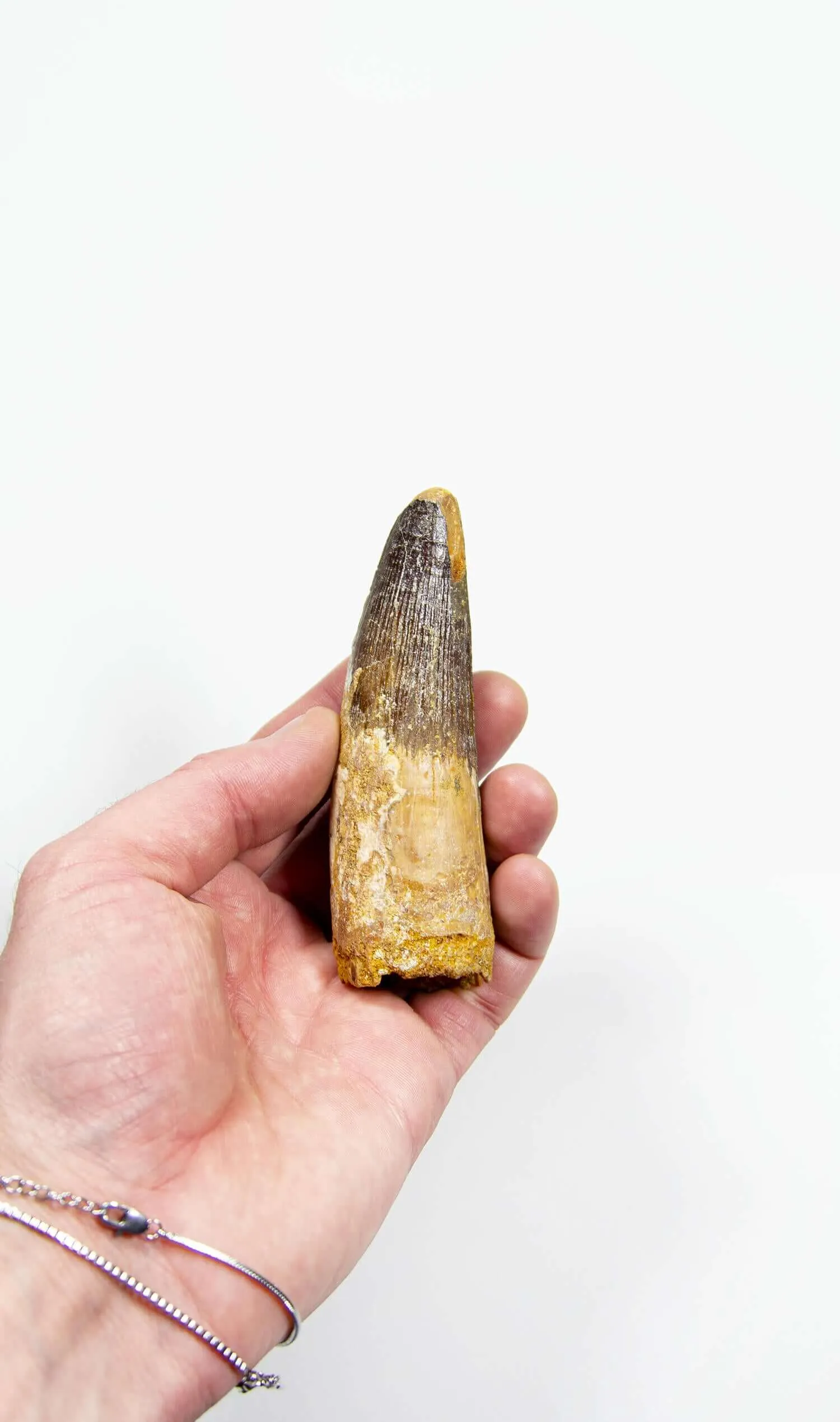DETAIL
Unearthed in the continental intercalaire, a significant 105mm Spinosaurus tooth highlights 19 million years of evolutionary prowess. Known for its sail-like dorsal fin, potent jaws, and robust killing claws, the Spinosaurus was an adept predator with specialised hunting capabilities. Its agility and intricate design surpassed similar-sized dinosaurs, making it highly successful in both aquatic and terrestrial environments. Despite its effectiveness, Spinosaurus specimens are relatively rare in discoveries, amplifying their appeal among researchers and collectors eager to delve into the mysteries of this colossal predator from the past given the relatively rare discoveries, amplifying a desirability among researchers and collectors alike.
CONDITION
Showcases remarkable morphology from root to tip. Condition-wise, this robust tooth exhibits a nice rich dark patination. Life wear in the Spinosaurus's jaw has led to enamel loss at the crown apical tip and a light patch midway along the carina. The dense rootstock is filled with depositional material from the fossil bed. A chance to invest in a prestigious Spinosaurus tooth, a relic from a ferocious aquatic theropod dinosaur that once ruled the cretaceous waterways, overall, a truly great specimen, especially for its size.
STAT
Order: Saurischia / Family: Spinosauridae.
Genus: Spinosaurus aegyptiacus, [Spine Lizard].
Size: Among largest theropods, estimated 50 to 59 ft.
Age: Late Cretaceous, 93 to 112 million years.
Habitat: Discovered in Egypt and Morocco, North Africa.
Origin: Continental Intercalaire, B. Tigri, S.E.Morocco.
Diet: Primarily piscivorous, composed of sawfish and fish.
Teeth: Characterised conical teeth suitable for grasping slippery prey.
Class: Spinosauridae family, with aquatic and terrestrial adaptations.
Physiology: Sail structure, likely thermoregulated, crocodilian jaws.
Discovery: Palaeontologist Ernst Stromer in 1912.
Extinction: End of Cretaceous, environmental changes.
CM / Mesial curve: L: 10.5 CM / KG: 0.112
EXPLORE
















